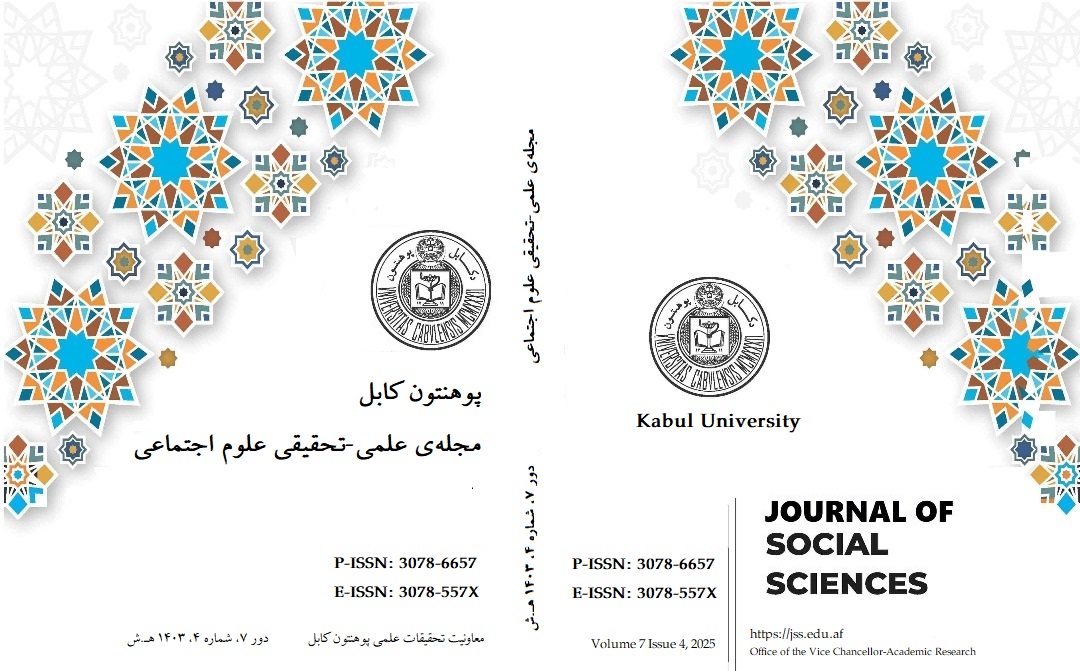Main Article Content
Abstract
This study examines the role of a leader's supportive communication style in enhancing employees’ motivation in organizations based on the leadership transformational model. The importance of this research related to the findings that supportive leaders can increase employees' intrinsic motivation by providing emotional support, encouragement, and attention to their needs. The significance of this research stems from the role of a supportive communication style, which not only leads to enhanced employee performance and creativity but also reduces stress and increases job satisfaction. In this study, a descriptive method was used and the transformational model was examined. The data collection approach was quantitative, which was conducted through a survey through the distribution of questionnaires, and the reliability of the questionnaire was checked in SPSS .817. The hypothesis established in this research is that “Applying a supportive communication style contributes to enhancing the motivation of the corporate employees, leading to loyalty and reducing the employee turnover rate.”. The preliminary results indicate that using an appropriate communication style provides a dynamic and motivating environment for corporate employees, leading to improved performance.
Keywords
Article Details
Copyright (c) 2025 Journal of Social Sciences - Kabul University

This work is licensed under a Creative Commons Attribution-NonCommercial 4.0 International License.
References
- قبادی، م.ک. (1959). ارتباطات سازمانی. سازمان مدیریت صنعتی. تهران.
- کیا، ع.ا. و دیگران. (1398). طراحی و ارزیابی الگوی کارکرد های متنوع شبکه های اجتماعی مجازی در ارتباطات میان فرهنگی قومی. پرتال جامع علوم انسانی، 2 (28)، 105-77. https://doi/gmj.2020.78883/10.22059
- وود، ج. (1396). موزاییک ارتباطات. مطبعهی مسلکی افغان. کابل.
- Adler, R.B, and Elmhorst, J.M. (2016). Communicating at work: The Principles and Practices for the Business and Professions. McGraw-Hill Education.
- Bass, B. M., and Riggio, R. E. (2006). Transformational Leadership. Psychology Press.
- Bodie, S. M. (2014, January 25). Supportive Communication. Retrieved from Research Gate: DOI: 10.1515/9783110276794.371
- DeVito, J.A. (2022). Interpersonal Communication Book. Pearson Education Limited.
- Fisher, R., Ury, W. and Patton, B. (2011), Getting to Yes: Negotiating Agreement without Giving In, 2nd ed., Houghton Mifflin.
- Goleman, D. (1995). Emotional Intelligence. New Yor, Bantam.
- Goleman, D. (1998). Workong with Emotional Intelligence. Bantam.
- Hall, E. T. (1976). Beyond the Culture. New York: Double Day.
- Herzberg, F., Mausner, B., and Snyderman, B.B. (2011). The Motivation to Work. Transaction Publishers.
- Knapp, M. L., Hall, J. A., & Horgan, T. G. (2013). Nonverbal Communication in Human Interaction (8th ed.). Boston, MA: Cengage Learning.
- Maslow, A.H. (1943). A Theory of Human Motivation. Psychological Review.
- McQuail, D. (2010). McQuail’s Mass Communication Theory (6th ed.). London: SAGE.
- Mintzberg, H. (2009). Managing. Berrett Koehler Publishers.
- Northouse, P. G. (2018). Leadership Theory and Practice. Sage publications.
- Robbins, S.P., and Judge, T.A. (2017). Organizational Behavior. Pearson Education.
- Tian et al. (2020). The Impact of Transformational Leadership on Employee Retention: Mediation and Moderation Through Organizational Citizenship Behavior and Communication. Frontiers, 1-11.
- Wale, H. (2025, 2 06). CIF. Retrieved from https://corporatefinanceinstitute.com/: https://corporatefinanceinstitute.com/resources/management/leadership-traits-list/
- Yukl, G. (2010). Leadership in Organizations. Pearson Education
References
قبادی، م.ک. (1959). ارتباطات سازمانی. سازمان مدیریت صنعتی. تهران.
کیا، ع.ا. و دیگران. (1398). طراحی و ارزیابی الگوی کارکرد های متنوع شبکه های اجتماعی مجازی در ارتباطات میان فرهنگی قومی. پرتال جامع علوم انسانی، 2 (28)، 105-77. https://doi/gmj.2020.78883/10.22059
وود، ج. (1396). موزاییک ارتباطات. مطبعهی مسلکی افغان. کابل.
Adler, R.B, and Elmhorst, J.M. (2016). Communicating at work: The Principles and Practices for the Business and Professions. McGraw-Hill Education.
Bass, B. M., and Riggio, R. E. (2006). Transformational Leadership. Psychology Press.
Bodie, S. M. (2014, January 25). Supportive Communication. Retrieved from Research Gate: DOI: 10.1515/9783110276794.371
DeVito, J.A. (2022). Interpersonal Communication Book. Pearson Education Limited.
Fisher, R., Ury, W. and Patton, B. (2011), Getting to Yes: Negotiating Agreement without Giving In, 2nd ed., Houghton Mifflin.
Goleman, D. (1995). Emotional Intelligence. New Yor, Bantam.
Goleman, D. (1998). Workong with Emotional Intelligence. Bantam.
Hall, E. T. (1976). Beyond the Culture. New York: Double Day.
Herzberg, F., Mausner, B., and Snyderman, B.B. (2011). The Motivation to Work. Transaction Publishers.
Knapp, M. L., Hall, J. A., & Horgan, T. G. (2013). Nonverbal Communication in Human Interaction (8th ed.). Boston, MA: Cengage Learning.
Maslow, A.H. (1943). A Theory of Human Motivation. Psychological Review.
McQuail, D. (2010). McQuail’s Mass Communication Theory (6th ed.). London: SAGE.
Mintzberg, H. (2009). Managing. Berrett Koehler Publishers.
Northouse, P. G. (2018). Leadership Theory and Practice. Sage publications.
Robbins, S.P., and Judge, T.A. (2017). Organizational Behavior. Pearson Education.
Tian et al. (2020). The Impact of Transformational Leadership on Employee Retention: Mediation and Moderation Through Organizational Citizenship Behavior and Communication. Frontiers, 1-11.
Wale, H. (2025, 2 06). CIF. Retrieved from https://corporatefinanceinstitute.com/: https://corporatefinanceinstitute.com/resources/management/leadership-traits-list/
Yukl, G. (2010). Leadership in Organizations. Pearson Education
